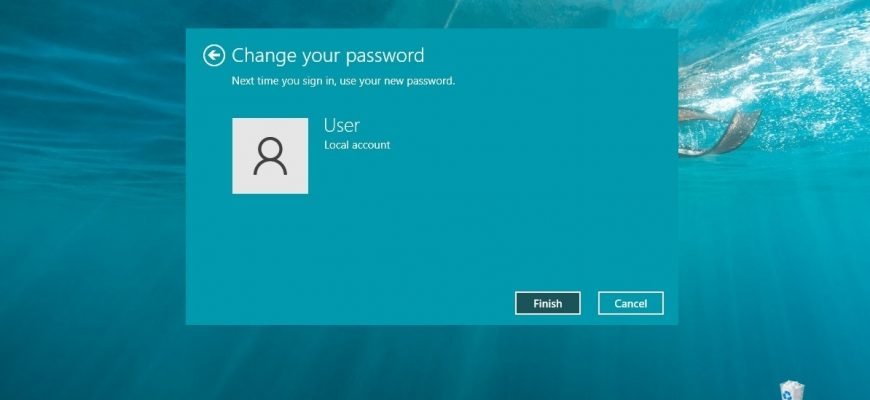The Windows 10 operating system primarily uses a password to keep your personal data and local account files secure. If necessary, you can change your password or any other local account password.
To change the local user account password in Windows 10, you need to log in with administrator privileges
- How to change the password for your local user account in the Windows Settings app
- How to change local account password using “CTRL + ALT + DEL” security screen
- How to change the password of any local account using the Classic Control Panel
- How to change the password of any local account using the utility “User Accounts” (netplwiz.exe)
- How to change the password for any local account in the “Local Users and Groups” snap-in
- How to change the password of any local account on the command prompt
How to change the password for your local user account in the Windows Settings app
Use this method to change the password for the current local user account using the Windows Settings application.
Open the “Windows Settings” application by clicking the Start button on the taskbar and then select Settings or press Win + I on your keyboard.

In the “Windows Settings” window that opens, select Accounts.
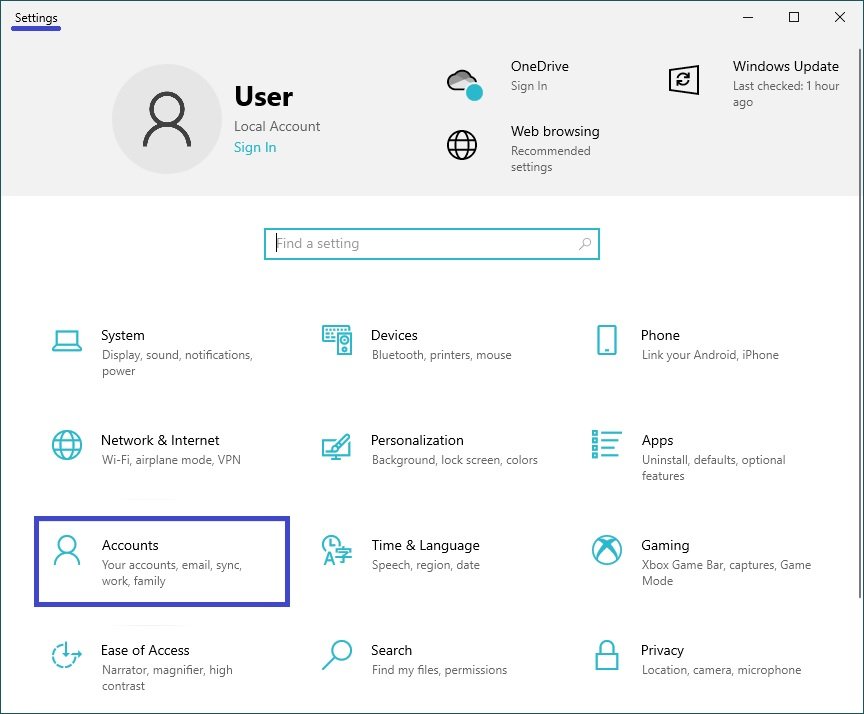
Then select the Sing-in options tab, and on the right side of the window in the Password section, under Sing in with your account’s password, click Change.
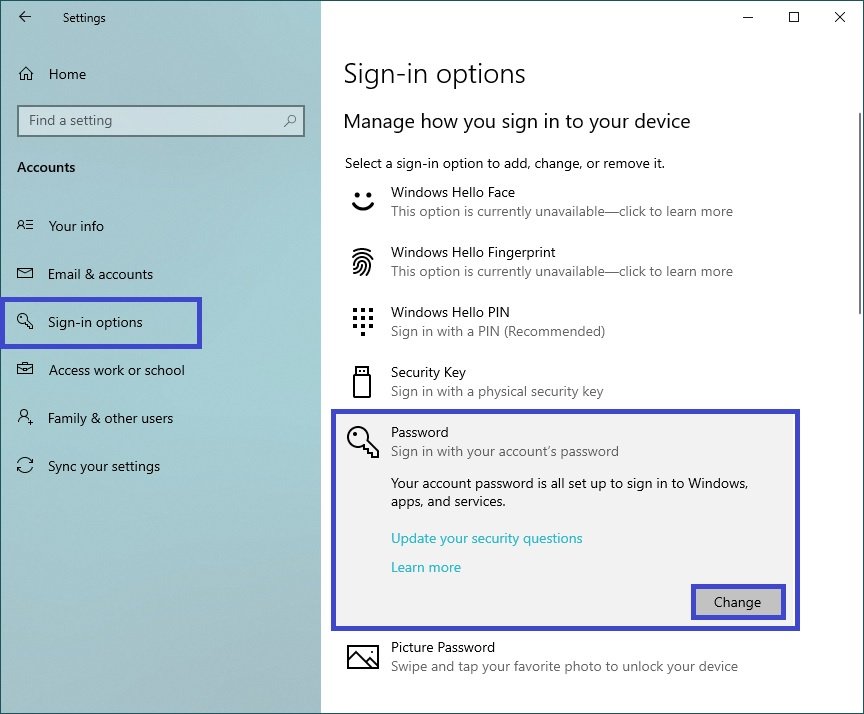
In the Change your password window, enter the current password and click Next.
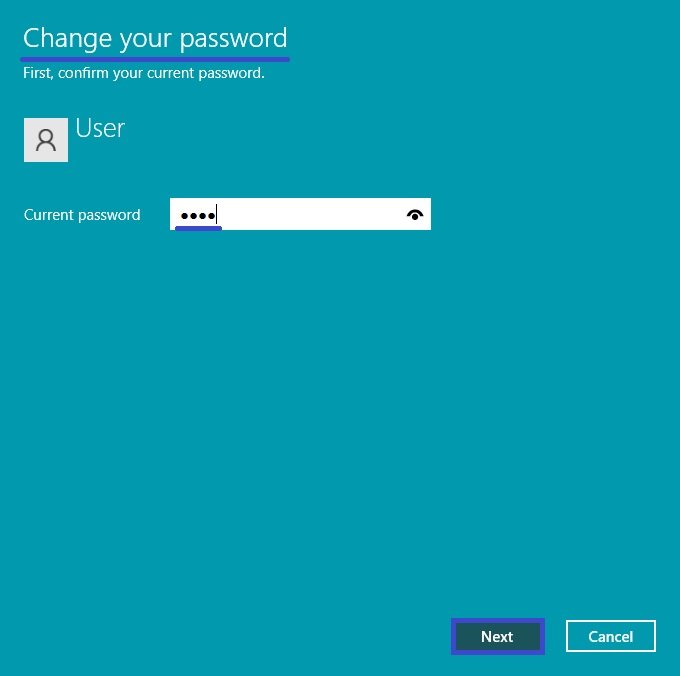
In the next window, enter a new password, enter the new password again, enter the password hint and click Next.
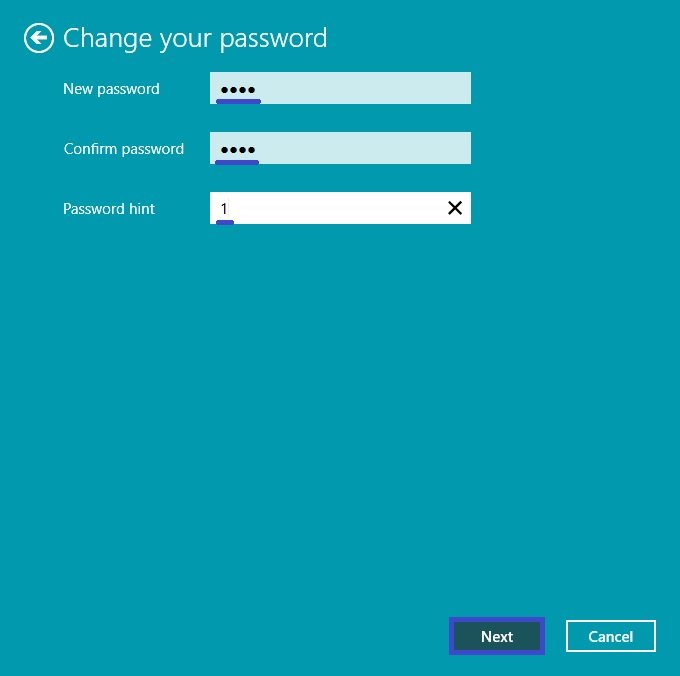
Then click Finish. The password will then be changed.
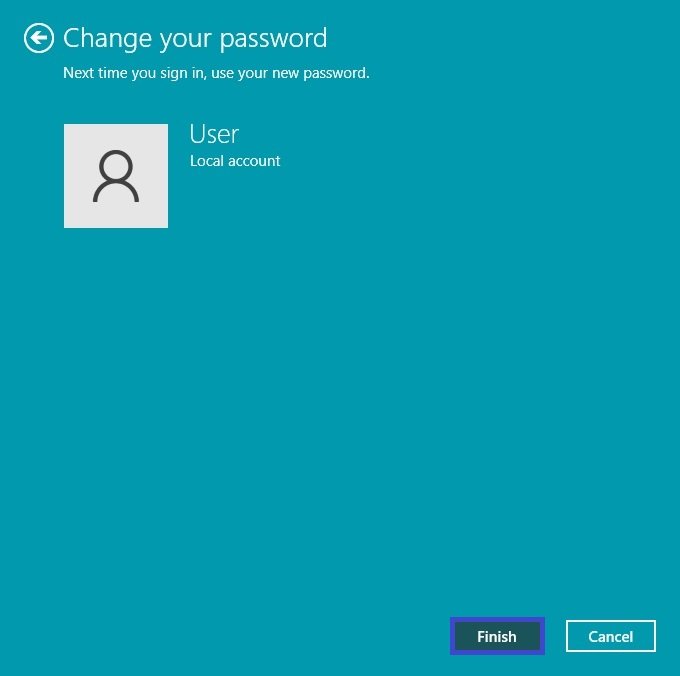
How to change local account password using “CTRL + ALT + DEL” security screen
Use this method to change the password for the current local user account using the “CTRL +ALT + DEL” security screen.
Log in to the account you want to change the password for and press CTRL + ALT + DEL and select Change a password on the Security screen.

Then, on the Change a password screen, enter the current password in the Old Password field, enter the new password in the New Password and Confirm Password fields, and press Enter ↵ or press the arrow key.

In the next window, click OK. The password will then be changed.

How to change the password of any local account using the Classic Control Panel
To change the local user account password in Windows 10, you need to log in with administrator privileges
This method should be used only if the local user has forgotten his password and there is no disk to reset the password
For security reasons, Windows protects certain information by making it inaccessible if the user’s password is reset. When an administrator changes, resets, or deletes the password of another user’s local account on a computer, that local account loses all encrypted EFS files, personal certificates, and saved passwords for websites or network resources.
Open the Classic Control Panel, select Small icons from the View by drop-down list and click User Accounts.
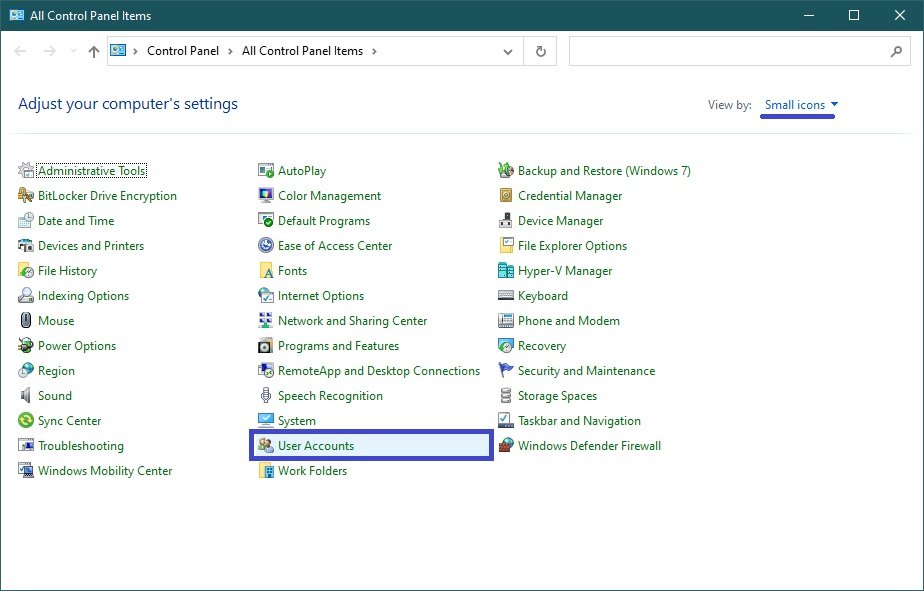
In the User Accounts window, click the Manage another account link
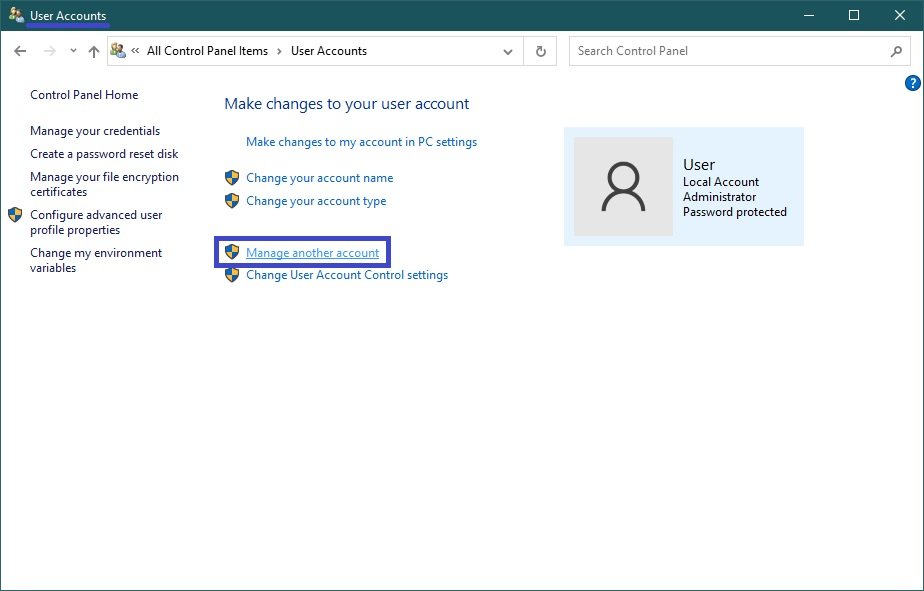
In the next window, select the desired account whose password you want to change.
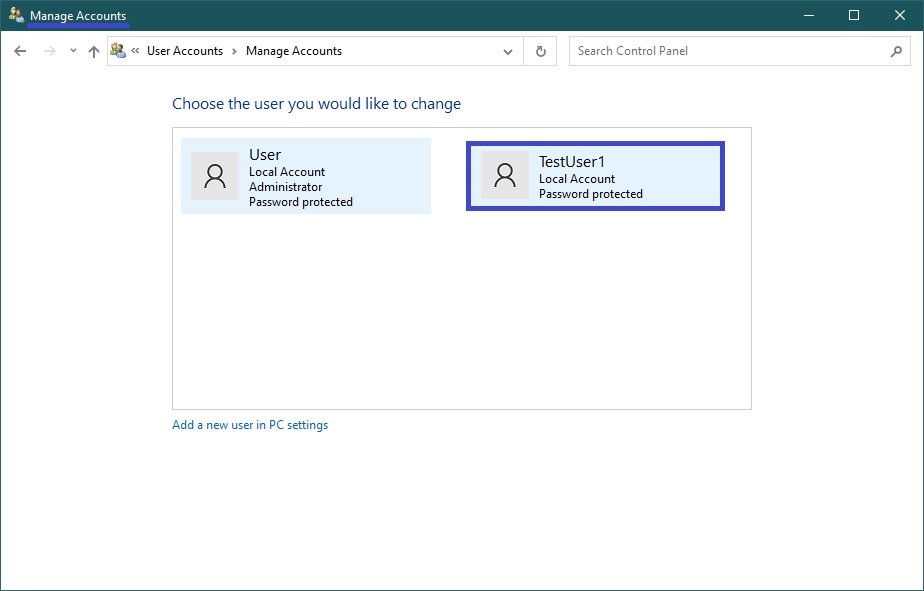
Then click the Change the password link
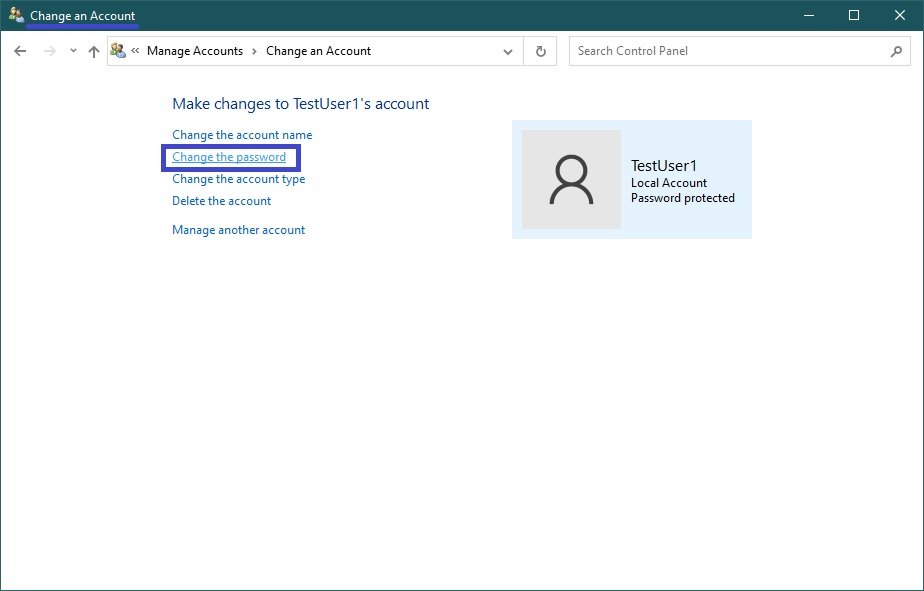
In the Change Password window, enter a new password and its confirmation in the appropriate fields, then click Change password.
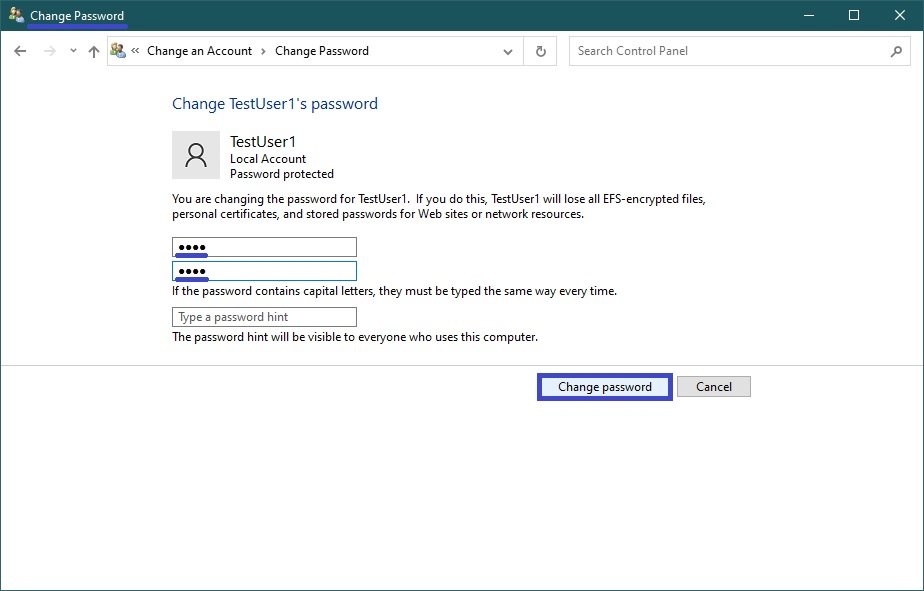
How to change the password of any local account using the utility “User Accounts” (netplwiz.exe)
To change the local user account password in Windows 10, you need to log in with administrator privileges
This method should be used only if the local user has forgotten his password and there is no disk to reset the password
For security reasons, Windows protects certain information by making it inaccessible if the user’s password is reset. When an administrator changes, resets, or deletes the password of another user’s local account on a computer, that local account loses all encrypted EFS files, personal certificates, and saved passwords for websites or network resources.
To change the local account password this way, press Win + R, enter netplwiz or control userpasswords2 in the Run window that appears, then press Enter ↵.
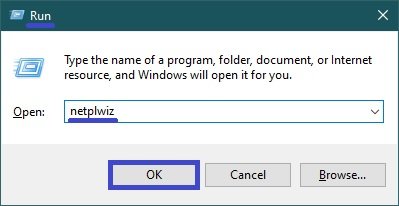
In the User Accounts window that opens, if it is not set, select the Users must enter a user name and password to use this computer checkbox, then select the user account whose password you want to change and click Reset Password… .

In the Reset Password window that opens, enter a new password in the New password: field, enter the new password again in the Confirm new password: field, and click OK.

Then click OK in the User Accounts window.

How to change the password for any local account in the “Local Users and Groups” snap-in
Local Users and Groups is available in Windows 10 Pro, Enterprise, and Education editions
To remove the local user account password in Windows 10, you need to log in with administrator privileges
This method should be used only if the local user has forgotten his password and there is no disk to reset the password
Resetting the password can lead to irreversible loss of information for the user account. For security purposes, Windows protects some information by denying access to it when you reset the user’s password. This loss will happen when the user logs out.
Press Win + R, then enter lusrmgr.msc in the Run window and press Enter ↵.

In the Local Users and Groups window that opens, select the Users folder in the left pane, then select the account whose password you want to change in the middle pane and right-click on it, then select the Set Password… item in the context menu that appears.

In the window that opens, click Proceed.

In the next window, in the New Password: field, enter the new password, in the Confirm password: field, enter the new password again and click OK.

Click OK again and close the Local Users and Groups window.

How to change the password of any local account on the command prompt
To remove the local user account password in Windows 10, you need to log in with administrator privileges
This method should be used only if the local user has forgotten his password and there is no disk to reset the password
When an administrator changes, resets or deletes the password of another user’s local account on a computer, that local account loses all encrypted EFS files, personal certificates and saved passwords for web sites or network resources.
To change the password for a local account without prompting, run the command prompt as administrator and run the following command:
net user “user_name” “new_password”
Replace user_name in the above command with the actual user name of the local account whose password you want to change.
Replace new_password in the above command with the actual username of the local account whose password you want to change.
In this example, the command looks like this:
net user “TestUser1” “123456”

To change the password for a local account with prompt display, run the command prompt as administrator and run the following command:
net user “user_name” *
Replace user_name in the above command with the actual user name of the local account whose password you want to change.
In this example, the command looks like this:
net user “TestUser1” *
This command prompts you to enter a password for the user, enter a new password and press the Enter↵ key If you are prompted to enter the password again for confirmation, enter the new password again and press the Enter↵ key.
The password is not shown when you enter it.
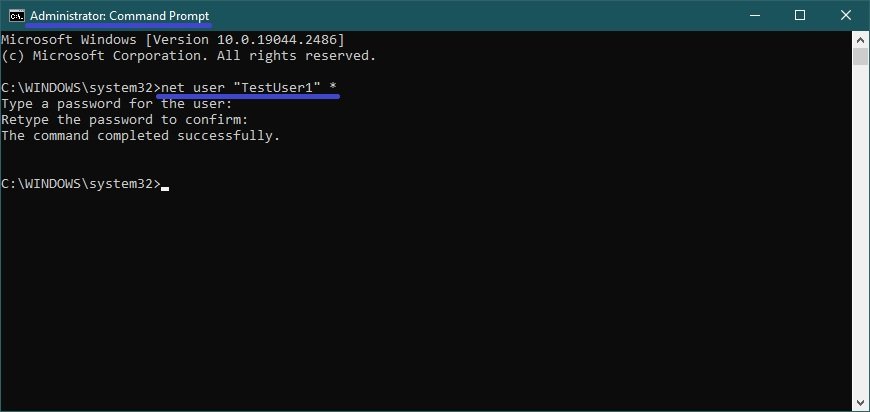
Using the above methods, you can change the password for your (current) or any other local user account in Windows 10.

